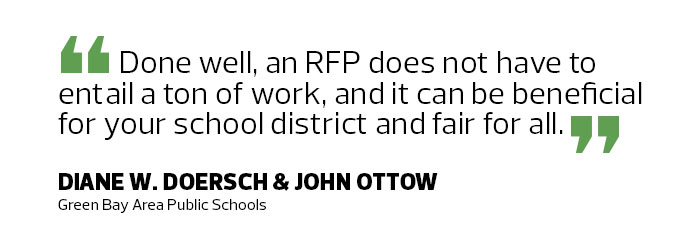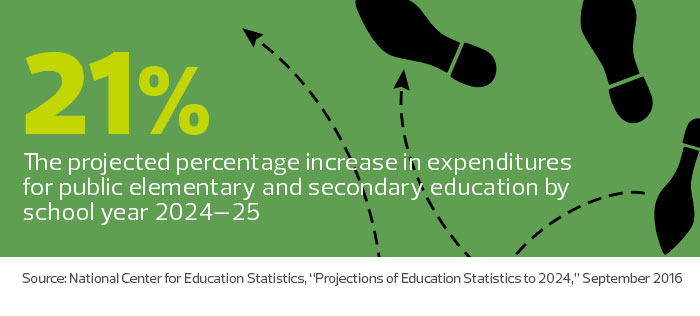4 Tips for Creating a Thorough RFP Process
We recently told a coworker at Green Bay Area (Wis.) Public Schools that we were looking forward to creating a request for proposal. After the coworker stopped laughing, she replied, “I am laughing at you, not with you.” That is the way it is with RFPs. We don’t know anyone who looks forward to creating an RFP, but standardizing and building a workable process has changed our way of thinking. Done well, an RFP does not have to entail a ton of work, and it can be beneficial for a school district and fair for all.
A good RFP process can protect a district from scrutiny over purchases and ensure that the district has received the best price and products possible. Here are some steps to make the RFP process easier:
1. Standardize Policy, Processes and Practices
It’s often best to start with state law, then move to the school district’s policy to find out what items the RFP procedure will require. For instance, our district's policy states that “budgeted equipment and services items that exceed a unit cost of $100,000 shall be brought to the Board for action.”
Our board of education has the expectation that we follow the policy rule regarding purchases over $50,000. Our department of technology works closely with our CFO, purchasing department and legal counsel to coordinate our RFP. We work to standardize the complete RFP process so that everyone involved has a roadmap for the next steps to come.

2. Build a Proposal Timeline
We always work backward by determining when our recommendation needs to go to our board of education for approval. That is the trigger that will drive the factors that precede it. From that defined point in time, we lay out the following items:
-
75 Days Before Meeting: RFP released to solution providers
- 60 Days Before: Solution providers attend a mandatory walk-through and overview of the RFP
-
55 Days Before: Additional follow-up questions proposed to the district by solution providers
-
50 Days Before: Questions and answers provided by the district to solution providers
-
21 Days Before: Proposals due and response opening
-
20 Days Before: Proposal assessment window
-
10 Days Before: Update to the board of education
-
On the Day of Meeting: Formal recommendation to the board of education
3. Have a Fluid RFP Template from Which to Work
It has taken time, but we have created a template that includes most of the acquisitions we will make in the department of technology. It includes hardware purchases (including infrastructure components or student devices) or service contracts such as multiyear support for our equipment. Many purchases end up being a combination of both hardware and a service. When working with our template, we simply remove the parts of the RFP not needed and then work on customizing the rest.
We designed our template so it is modular and can be separated into specific parts for all stakeholders to create, review and revise simultaneously. For instance, our technical team may work on a section regarding the requirements that integrate with our system; at the same time, our technology integrators may tackle the use case scenarios that cover how students and staff can best use the items so that the solution providers better understand what problems we are trying to solve.
The CIO or the director of technology may work on the large structure of the RFP (and the introductory or overview pieces) while our legal counsel refines and customizes any language relative to the type of purchase or situational condition. Dates and times are kept in the general information document. At the end, we pull all the pieces together so that it makes one fluid and rich document.

4. Walk Providers Through the RFP
Once the RFP is distributed to vendors, we highly recommend a mandatory walk-through and RFP review with solution providers. The event provides an opportunity for us to meet face to face, gather their contact information and collaborate around the RFP to address questions.
To assure fairness for all solution providers, we always request that they ask for clarification verbally and submit questions in writing so that all providers have a copy of every inquiry, along with our answers to those questions. The value of the mandatory reading in smoothing out wrinkles in the process cannot be overstressed.
The next step in procurement includes the proposal assessment process and subsequent actions after a proposal recommendation is accepted by the board of education. Getting to that point is not the finish line; in fact, it serves as a new beginning as we build a relationship with our solution provider and move forward into the planning and implementation stages of our work together.
Procurement is an essential part of any thriving educational organization. Systematizing and building guidelines and procedures into the school district's culture can help make each procurement a little smoother and less daunting than the one before.









